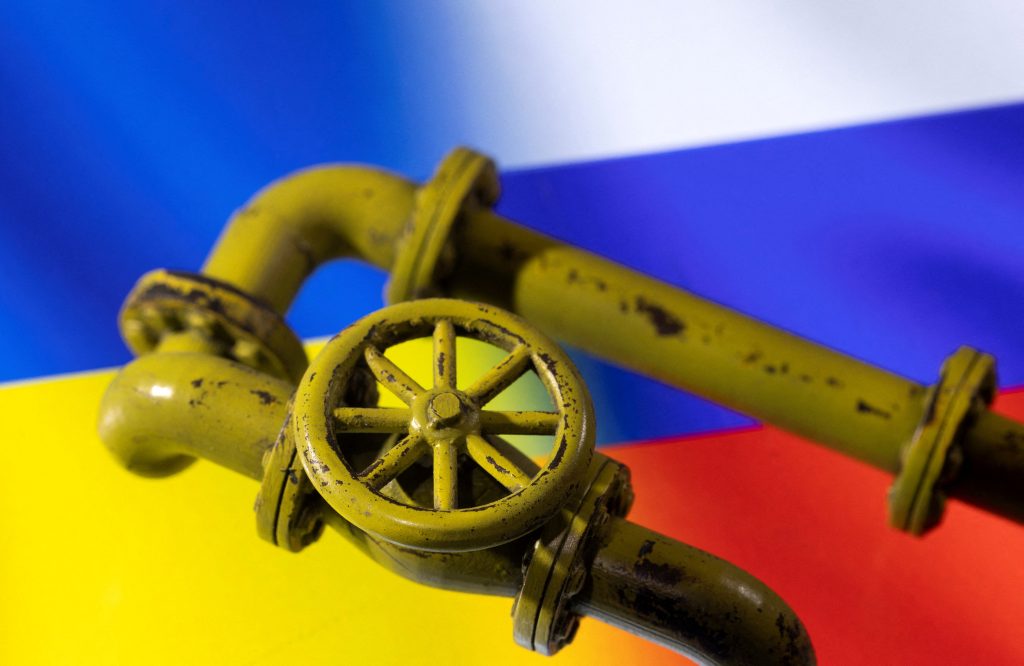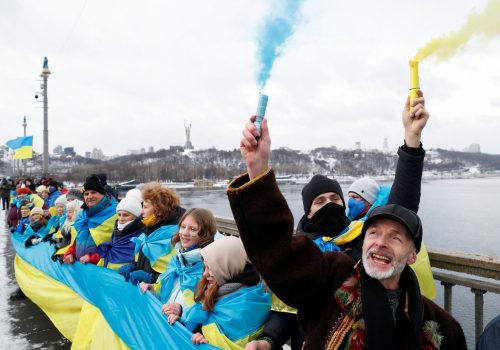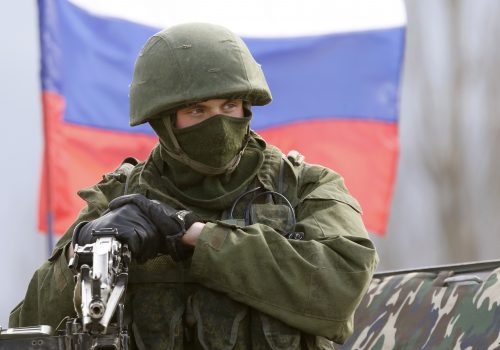The weaponization of energy is a common threat facing Ukraine, Europe and wider the transatlantic alliance. We all know there is no strength without unity.
Given the escalating current tensions, the Gas Transportation System Operator of Ukraine (GTSOU) welcomes the recent joint statement by US President Joe Biden and European Commission President Ursula von der Leyen on US-EU Cooperation on Energy Security.
Ukraine’s gas transit and storage infrastructure are core pillars of our shared European energy security. In order to “avoid supply shocks, including those that could result from a further Russian invasion of Ukraine,” we would like to propose a number of concrete and immediate measures that are readily implementable.
Of course, the military dimension of Ukraine’s security is at the center of today’s transatlantic discourse. Nevertheless, the energy front is no less important. German Foreign Minister Annalena Baerbock made a very astute observation during her recent visit to Kyiv, saying that “termination of energy supplies from Russia to Ukraine could be worse than a tank offensive.”
The five-year gas transit agreement signed in 2019 by Russia and Ukraine is based on the “ship or pay” principle and thus does not guarantee the physical flow of gas to Europe. Only the continuous transmission of significant gas volumes can underwrite Ukraine’s energy and national security. This is a question of mutual interdependence and thus a critical consideration in Russia’s escalation calculus. Preservation of transit for the next ten years at the level of 40-45 bcma is one of the GTSOU’s strategic priorities.
We were encouraged by German Chancellor Scholz’s recent statement that Ukraine “can rely on Germany” in its bid to remain a gas transit country. It is essential for our European allies to recognize that continuity of gas transit is Ukraine’s most significant non-military barrier to further Russian aggression.
Stay updated
As the world watches the Russian invasion of Ukraine unfold, UkraineAlert delivers the best Atlantic Council expert insight and analysis on Ukraine twice a week directly to your inbox.
It is also important not to forget that the GTSOU buttresses German and EU energy security, not just Ukraine’s. Should all gas flows be diverted to bypassing pipelines such as Nord Stream 1, Turk Stream and Nord Stream 2, Gazprom will consolidate its control over transit routes, and the current gas crisis will become a recurring phenomenon.
With this in mind, we will continue to highlight the risks posed by the needless and diversionary Nord Stream 2 pipeline, especially when Gazprom refuses to unbundle transit from gas production and trading.
Efforts to push back against Nord Stream 2 need not be separated from efforts to assure continuity of gas transit via Ukraine. The current contract will expire in 2024, but nothing prevents its extension today. It is in Europe’s and Ukraine’s interest to frame this as ship-and-pay and prolong the agreement until at least 2030.
Ukrainian domestic gas production is currently 20 bcma and consumption is 30 bcma. Given that Ukraine remains import-dependent for about one-third of the country’s gas needs, the GTSOU is actively working with international partners to diversify gas supply sources and create new import routes.
Of all the EU-Ukraine connection points (Poland, Slovakia, Hungary and Romania), Slovakia presents the most obvious, ready-made option to increase transit capacity westward, from the EU towards Ukraine. The gas corridor consists of four gas pipelines of the same diameter, but two are currently idle.
If Slovakia were to reverse one of the unused gas pipelines in the West-East direction, this would represent a meaningful change in the existing architecture of gas transit in Eastern Europe and would significantly increase the reliability of supplies to Ukraine and Moldova. Moreover, such changes do not require new infrastructure and can be implemented in a matter of months not years.
While the Slovakia route is about volumes, access to gas imports from Poland is about diversification of suppliers. The Baltic Pipe project, which will connect Poland directly to Norway’s gas fields, is nearing completion. LNG terminals are getting built and expanded, with access to the LNG terminal in Klaipeda expected later this year.
Poland’s determination and leadership on the energy defense front are to be applauded. At the GTSOU we recognize the qualitatively different dimensions of Polish-Ukrainian cooperation regarding gas supply security. To that end, the GTSOU is working with our counterparts at Gaz-System and PGNiG to introduce guaranteed capacities in the West-East direction.
Eurasia Center events

The trans-Balkan gas corridor could be leveraged to open up access to LNG capacities around the Black Sea. Its transit capacity is 27 bcma, but it is sitting effectively idle because Gazprom has diverted gas flows to Blue Stream and Turk Stream. However, the infrastructure allows for two-way flow and can transport gas from Turkey and Greece.
To revitalize the Trans-Balkan route, we need the assistance of our colleagues from Bulgaria and Turkey, in particular the creation of guaranteed facilities in the direction of Turkey-Bulgaria with the possibility of third-party access. Changes in legislation by our partners from Moldova are also needed in accordance with the EU’s Third Energy Package. This would significantly strengthen the energy security of Eastern and Central Europe.
Reorientation towards decarbonized fuels is inevitable in the energy sector. However, if hydrogen is a prospect for the more distant future, then biomethane is a pragmatic scenario and the most profitable current option. The business case is strong, with no new infrastructure requirements and ready demand in Europe. But this is a new industry that needs regulatory support from Ukrainian institutions and large-scale investment.
We continue to focus all our efforts on maintaining Ukraine’s strategic deterrent, simultaneously ensuring our preparedness for a no-transit scenario and exploring the potential of decarbonized gases.
More than ever, we currently count on our international partners to keep at least 30% of Russia’s gas exports to Europe flowing via Ukraine. We seek support in expanding firm capacities in the EU-UA direction to minimize Ukraine’s vulnerability in case of a sudden termination of transit by Russia, and in co-investing with Ukraine in the gradual transition to renewable gases.
The idea that we are stronger together has long been a guiding principle in Ukraine-EU relations. Bolstering our shared defenses on the energy front is an important step towards this vision.
Olga Bielkova is director of government and international affairs at Ukraine’s gas transportation system operator GTSOU and a former member of the Ukrainian parliament (2012-2020).
Further reading
The views expressed in UkraineAlert are solely those of the authors and do not necessarily reflect the views of the Atlantic Council, its staff, or its supporters.

The Eurasia Center’s mission is to enhance transatlantic cooperation in promoting stability, democratic values, and prosperity in Eurasia, from Eastern Europe and Turkey in the West to the Caucasus, Russia, and Central Asia in the East.
Follow us on social media
and support our work
Image: Gas pipes alongside Russia's and Ukraine's national flags. January 31, 2022. (REUTERS/Dado Ruvic/Illustration/File Photo)





